Low-Latency IoT Sensors for Pest Monitoring
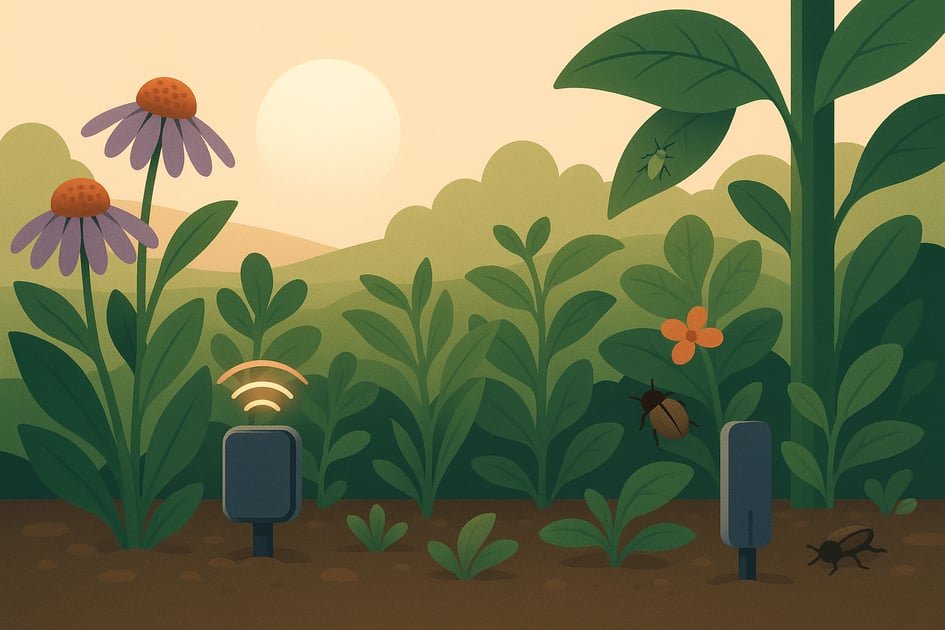
Protect your garden with IoT pest sensors that offer real-time alerts, precise data, and remote monitoring.
IoT sensors help detect pests early, send alerts instantly, and let you monitor your garden from anywhere. Here's why they matter:
- Fast Alerts: Get notified within seconds when pests are detected.
- Accurate Data: Track pest behavior and environmental factors affecting your garden.
- Remote Access: Use tools like AIGardenPlanner to monitor and manage your garden from your smartphone.
Quick Overview:
- What You Need: IoT sensors, weatherproof housing, a gateway, and a network router.
- Setup Tips: Place sensors near plants, entry points, and damp areas. Connect them to a central gateway for the best coverage.
- Maintenance: Regularly clean, inspect, and update your sensors to ensure accurate performance.
These sensors are ideal for home gardens, community spaces, and commercial operations, giving you control over pest management with ease.
Main Advantages of Fast IoT Pest Sensors
Quick Detection and Alerts
IoT sensors work around the clock to monitor your garden and send alerts within seconds when pests are detected. These alerts are triggered by:
- Movement patterns
- Signs of plant stress
- Shifts in temperature or humidity that could attract pests
- Early indicators of pest-related damage to plants
This allows you to act quickly before pests cause significant harm.
Accurate and Detailed Data
Today’s IoT pest sensors gather highly accurate data on pest activity and environmental conditions. This level of detail helps you:
- Track pest behavior with precision
- Understand how environmental factors influence pest activity
- Gain a comprehensive view of pest patterns across your garden
When paired with tools like AIGardenPlanner, this data helps create focused pest management strategies tailored to your garden’s specific needs. With this system, you can manage your garden remotely and make informed decisions in real-time.
Remote Monitoring Made Easy
Thanks to cloud connectivity, you can monitor your garden no matter where you are. Features include:
- Real-time access to pest activity data from anywhere
- Instant alerts sent directly to your smartphone
- User-friendly dashboards for analyzing pest trends
- The ability to adjust pest control settings remotely
Networked sensors ensure seamless monitoring across your entire garden, keeping you informed and in control at all times.
How to Install IoT Pest Sensors
Equipment You’ll Need
To set up your IoT pest monitoring system, you’ll need these items:
Hardware:
- IoT pest sensors
- Weatherproof housings
- Gateway device
- Network router
- Backup power supply
- Smartphone or tablet
Software:
- Sensor management dashboard
- Mobile app for alerts
- Data analysis software
- Network monitoring tools
Best Sensor Placement
Follow these tips for sensor placement:
- Place sensors around the garden perimeter and near entry points.
- Position them near plants or crops prone to pests.
- Install sensors by water sources, damp areas, compost bins, or mulch piles.
- Use dense foliage areas as additional monitoring spots.
Placement Tips:
- Mount sensors close to the ground.
- Keep them out of direct sprinkler spray.
- Ensure a clear line of sight to the gateway.
- Place the gateway centrally for the best coverage.
Once installed, connect the sensors to your management platform for seamless operation.
Using AIGardenPlanner
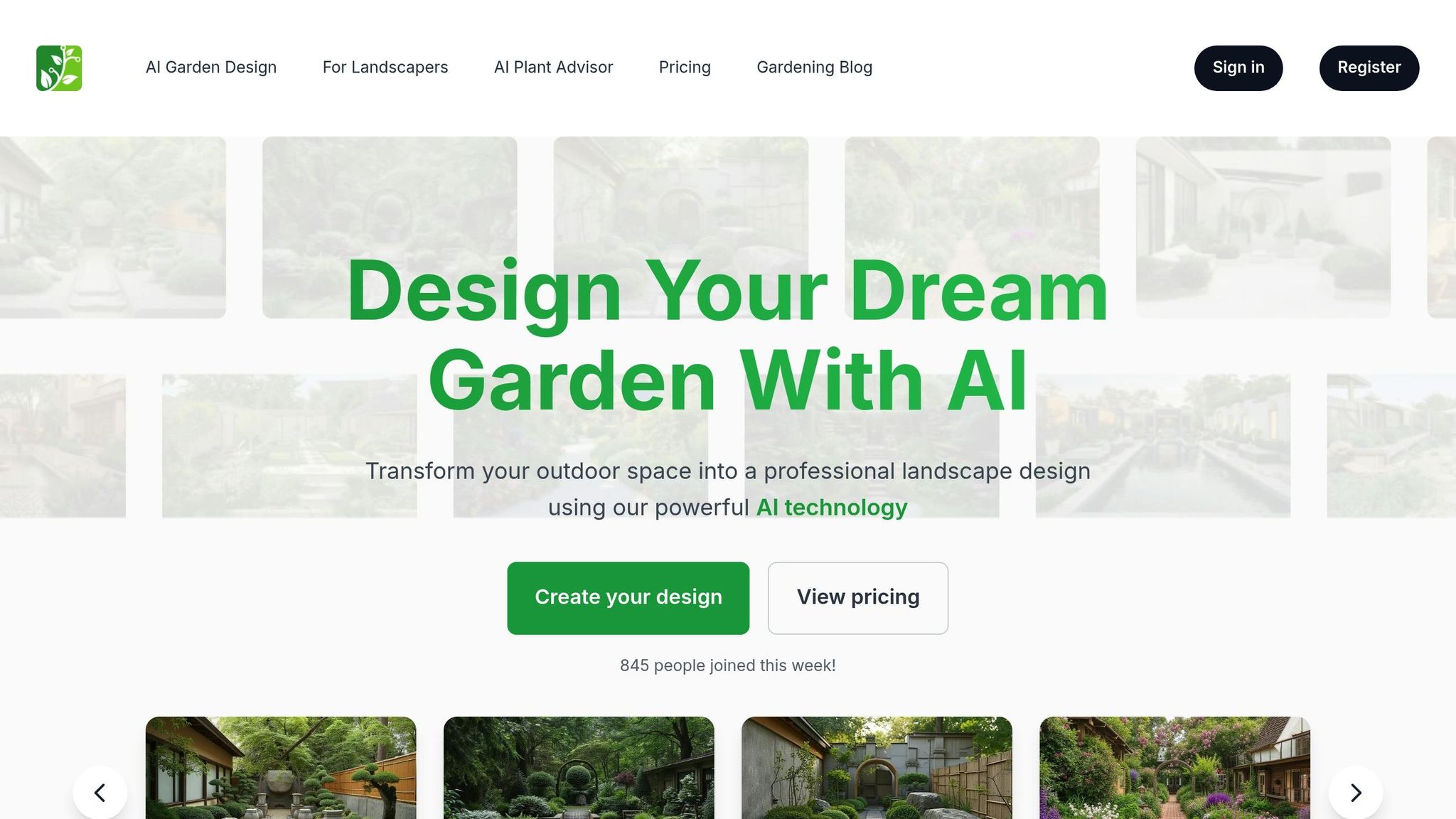
- Device Integration: Link your sensors to AIGardenPlanner via the device management interface for automatic syncing and real-time monitoring.
- Alert Customization: Set up notifications to get instant updates when pest activity is detected.
- Data Analysis: Use AIGardenPlanner’s tools to analyze sensor data, spot patterns, and predict pest infestations.
Follow AIGardenPlanner’s placement recommendations to ensure effective monitoring across your garden.
Fast Data Transfer Methods
Network Types Comparison
Here's a breakdown of different network options:
| Network Type | Latency | Range | Power Usage | Best For |
|---|---|---|---|---|
| MQTT | < 100ms | 300 ft | Low | Large gardens with multiple sensors |
| HTTP/2 | 200-300ms | Unlimited | Medium | Remote monitoring, cloud integration |
| LoRaWAN | 1-2 seconds | 6 miles | Very low | Rural gardens, battery operation |
| Wi-Fi | 150-200ms | 150 ft | Medium | Small to medium gardens |
| 5G | < 50ms | Unlimited | High | Real-time video monitoring |
Local Data Processing
Using edge computing can significantly improve response times. By processing data locally, it can filter out false positives, analyze images, combine readings, and compress information before sending it over the network. This reduces traffic and speeds up alerts.
For example, a sensor detecting rodent movement can analyze the heat signature and size of the object on-site. Instead of transmitting raw data for remote analysis, it sends an alert only when necessary.
Strong Network Setup Tips
A well-configured network ensures data is transmitted quickly and reliably, complementing local processing.
Gateway Placement
- Mount the gateway at least 6 feet off the ground.
- Place it centrally within 150 feet of all sensors.
- Use weatherproof housing designed for outdoor use.
- Install a lightning arrestor to protect against surges.
Signal Optimization
- Minimize obstacles between sensors and the gateway.
- Use mesh networking for larger gardens.
- Add signal repeaters every 100 feet in areas with dense vegetation.
- Position antennas vertically for better reception.
Maintenance Practices
- Test signal strength monthly.
- Clean sensor housings every three months.
- Replace backup batteries once a year.
- Update firmware as new versions become available.
To streamline management, connect your network to AIGardenPlanner's monitoring dashboard. This allows you to track connection quality and receive timely maintenance alerts.
sbb-itb-4d6a8dd
🚀 Ready to Reinvent Your Garden?
Join thousands of homeowners who have transformed their gardens using our AI design tool. Upload one photo to explore endless possibilities.
Get your AI garden designs →Maintaining IoT Pest Sensors
Upkeep Schedule
Keeping IoT pest sensors in good condition ensures they provide reliable data. Stick to these steps, adjusting as needed based on manufacturer advice and your garden's environment:
- Inspect sensors for visible damage or debris.
- Replace batteries or power sources when performance declines.
- Periodically calibrate the sensors to maintain accuracy.
- Clean external parts and check weather seals for wear.
- Update firmware and replace backup components during system reviews.
Plan maintenance during times of low garden activity and keep a log of performance data. After completing maintenance, ensure the system is secure to protect your data.
Security Steps
In addition to regular maintenance, take these measures to secure your IoT sensors:
-
Network Security
- Use a separate network segment with WPA3 encryption.
- Keep firmware up to date.
-
Access Control
- Set unique, strong passwords.
- Enable two-factor authentication for added protection.
- Maintain a log of authorized devices.
-
Data Protection
- Encrypt data both during transmission and while stored.
- Schedule automated backups to prevent data loss.
By following these steps, you can ensure your sensors remain secure while functioning at their best.
Using Data with AIGardenPlanner
Connect your IoT sensors to AIGardenPlanner to make the most of the data they collect. This integration allows you to:
- Monitor pest activity trends over time.
- Get instant alerts for unusual activity.
- Create detailed reports on pest patterns.
- Use AI-driven insights to refine plant choices and improve planting schedules.
With AIGardenPlanner, you can analyze data more effectively and receive timely notifications, helping you manage your garden with ease.
Conclusion
Key Takeaways
IoT pest monitoring offers three major benefits:
- Real-Time Alerts: Get instant notifications to act quickly.
- Reliable Data: Fast data transmission ensures accurate pest tracking.
- Remote Access: Manage your garden from anywhere using AIGardenPlanner.
These features make the setup process straightforward and efficient.
How to Get Started
Follow these three steps to begin using IoT pest monitoring:
-
Choose Your Sensors
- Select sensors based on your garden's size and specific pest issues.
-
Install Strategically
- Position sensors near entry points, high-value plants, and areas prone to pests.
-
Set Up and Configure
- Follow installation instructions.
- Connect sensors to your network and AIGardenPlanner.
- Adjust notification settings to suit your needs.
IoT Pest Control -See how Anticimex has revolutionised pest ...
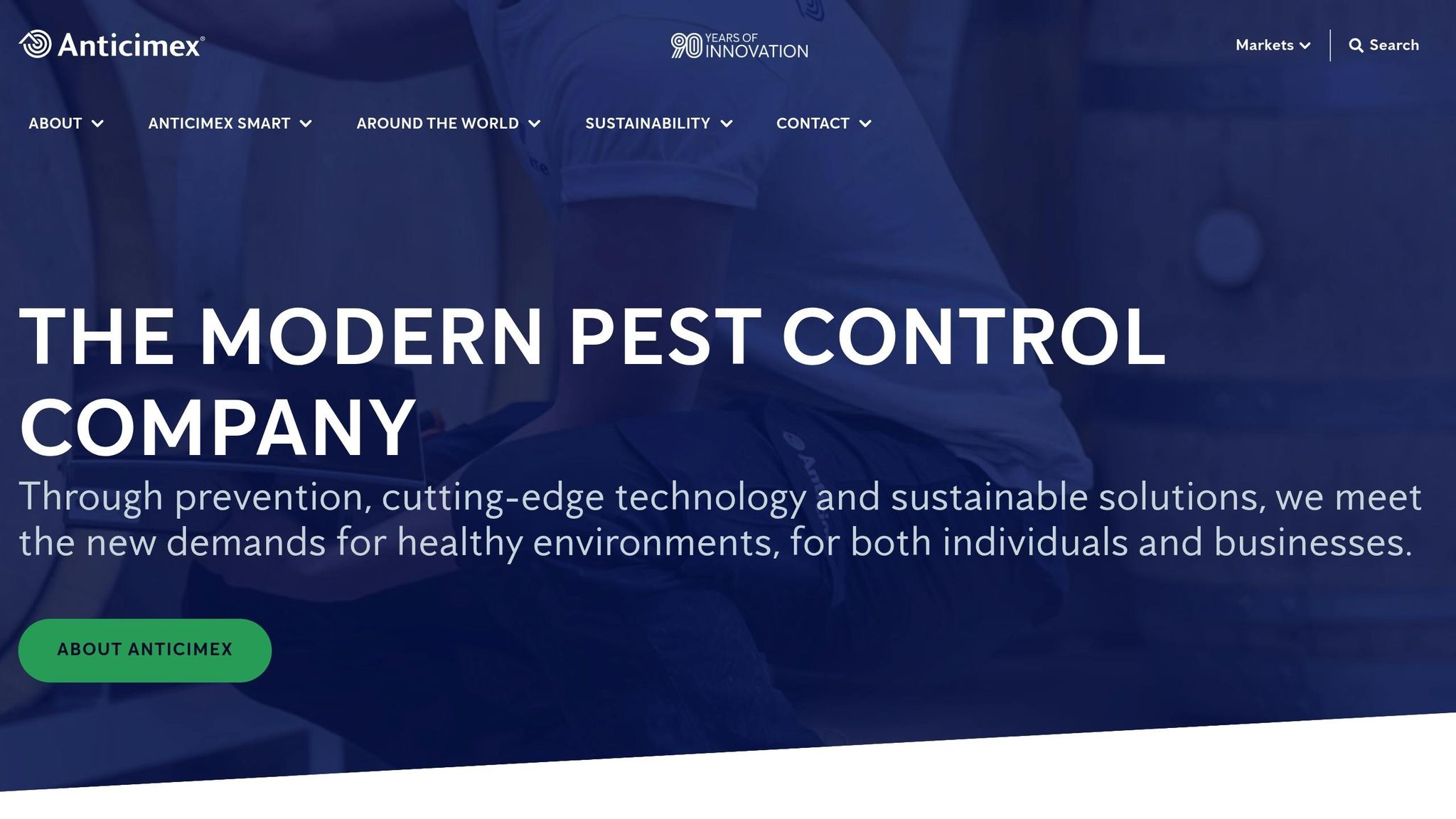

FAQs
How do IoT sensors identify harmful pests without confusing them with harmless garden activity?
IoT sensors use advanced algorithms and data analysis to distinguish between harmful pests and harmless garden activity. These sensors often rely on motion detection, sound analysis, and environmental data to identify specific pest behaviors or patterns. For example, they can detect the unique movement or sound frequencies of certain pests, helping to differentiate them from benign activities like wind-blown leaves or harmless insects.
By integrating these sensors into your garden, you can receive real-time alerts about potential pest issues, allowing for quicker intervention and healthier plants. For optimal results, ensure proper sensor placement and regularly calibrate your devices to maintain accuracy.
How can I keep my IoT pest monitoring system secure?
To ensure the security of your IoT pest monitoring system, follow these best practices:
- Use strong, unique passwords for all devices and accounts associated with your system. Avoid default or easily guessed passwords.
- Enable encryption to protect data transmitted between sensors and your monitoring platform.
- Keep firmware and software updated to ensure your devices have the latest security patches.
- Secure your network by using a strong Wi-Fi password and enabling network firewalls.
By implementing these measures, you can reduce the risk of unauthorized access and keep your system running safely and efficiently.
How can AIGardenPlanner work with IoT pest sensors to improve garden management?
While AIGardenPlanner is primarily focused on garden design and plant recommendations, it can complement IoT pest sensors by helping you create a healthier, more balanced garden environment. By using AIGardenPlanner to design your garden layout and select the right plants for your climate and soil, you can reduce conditions that attract pests and diseases.
Additionally, the platform's detailed growing guides can help you better understand the needs of your plants, enabling you to use data from IoT sensors more effectively. Together, these tools can help you monitor and manage your garden with greater precision and ease.
🎨 Visualize Your Dream Garden Today!
Transform any outdoor space into a professional landscape design in minutes. Just upload a photo, choose your style, and let our AI do the rest.
Start your garden transformation now →Related posts
Related Articles
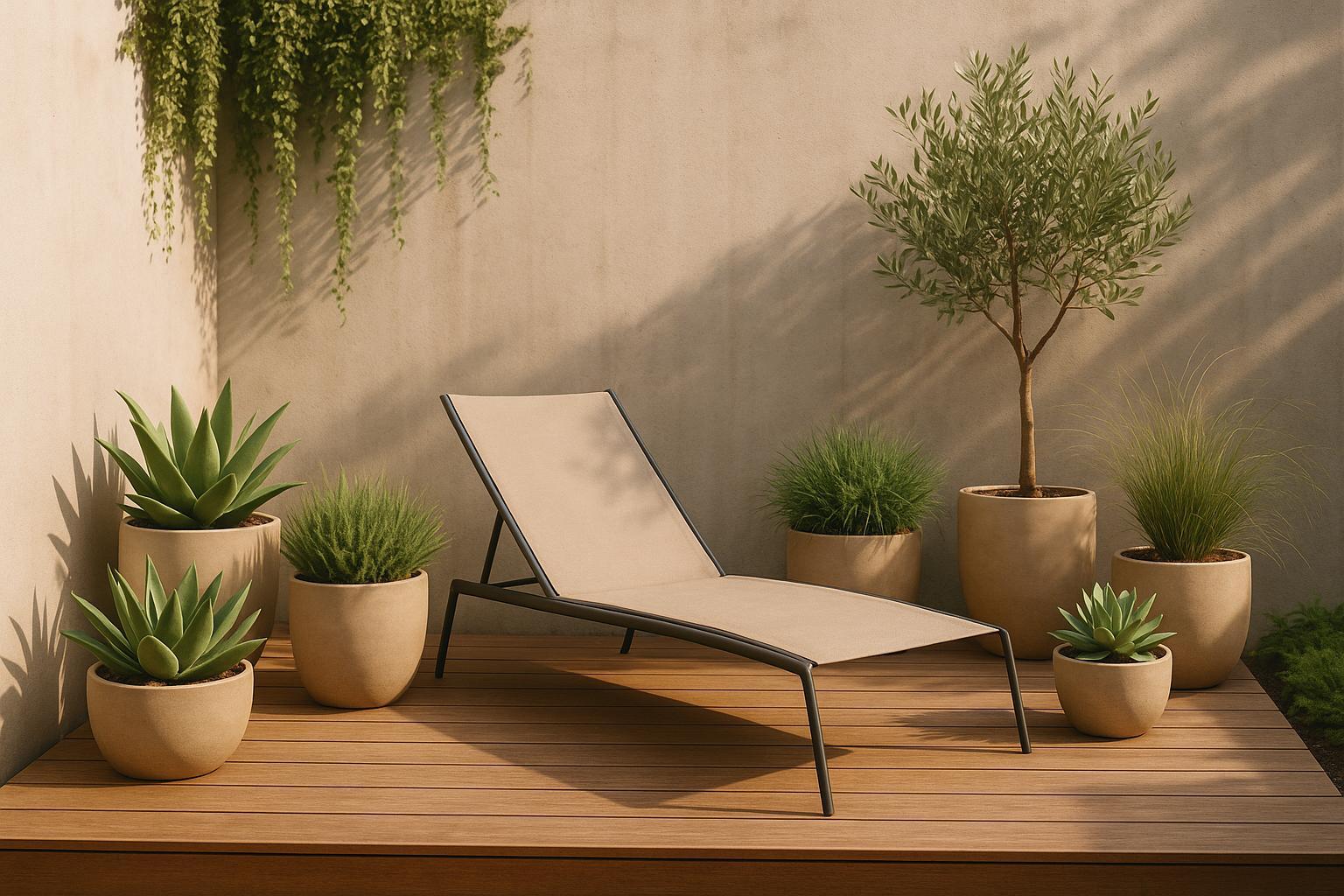
10 Minimalist Garden Ideas for Small Urban Spaces
Transform small urban spaces into tranquil retreats with minimalist garden ideas that emphasize simplicity and smart design choices.
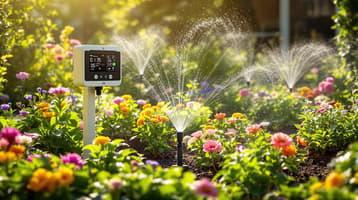
AI Tools for Efficient Garden Irrigation
Explore how AI-driven irrigation tools can optimize water usage, automate schedules, and enhance garden health with tailored care.

Spring Garden Planning Checklist: Essential Steps for Success
Prepare your garden for spring with essential steps, including soil testing, tool maintenance, and planting schedules for a thriving season.
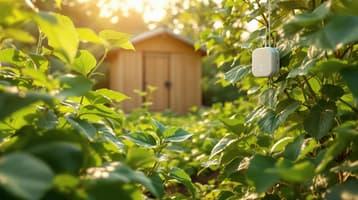
IoT Security for Garden Sensors: Key Features
Learn how to secure your IoT garden sensors with encryption, access controls, and network protection to safeguard your garden's data.
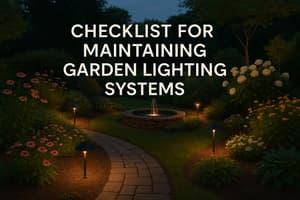
Checklist for Maintaining Garden Lighting Systems
Learn essential tips for maintaining your garden lighting system, ensuring safety and aesthetics throughout the seasons.

Ultimate Guide to Passive Cooling for Gardens
Explore natural ways to keep your garden cool using passive cooling techniques like strategic planting, water features, and sustainable materials.